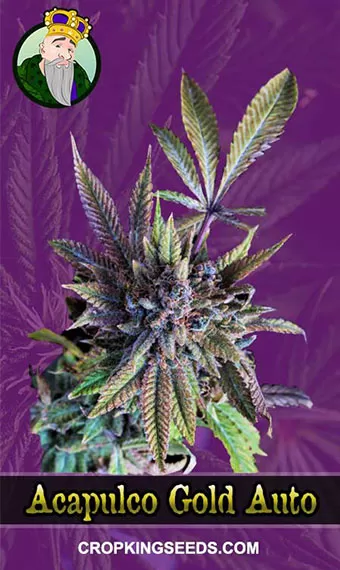Cloning cannabis or “clones” refers to a miniature replica of a specific cannabis plant produced by taking a small piece or “cutting” from the parent plant and allowing it to develop its roots. Cloning is a popular and efficient method used by cannabis growers to multiply their yield of weed plants without incurring additional costs.
By taking cuttings from a parent cannabis plant, growers can create multiple genetically identical clones with the same traits as the original plant. This method provides a significant advantage by ensuring the continuity of desirable traits from the parent plant in each clone produced. If the parent plant is female, all its clones will also be female, giving growers a predictable and reliable yield. Cannabis cloning is an easy and cost-effective method of multiplying the yield of marijuana plants that maintain genetic consistency and consistency of desirable traits.
What are the Advantages of Cloning?
A cannabis clone is a replica of a specific marijuana plant propagated from a cutting of its parent plant. The offspring and the mother plant share the same genes, and they will grow similarly. Clones provide the grower with inside information on the growth pattern, yield, and potency of the cannabis plant since they know precisely what the parent plant was like. Cloning is a cost-effective method of multiplying the yield of marijuana plants. You can take several clones from one cannabis plant and produce many brand-new plants in about a week with minimal cloning supplies.
Cannabis clones can be taken at most points in a plant’s life cycle, from the vegetative stage up to two or three weeks before harvest, making saving a favorite plant for the next grow easy. Clones have a head start over seedlings since they are already mature, which means they grow much faster in the first few weeks, especially for larger clones. This makes them a perfect choice for Sea of Green or 12/12 from seed techniques as they grow faster vegetatively and can be immediately changed to the flowering stage.
However, clones are not for everyone. Some growers prefer cultivating a few plants of different strains, making starting with seeds more convenient. Seeds provide the grower with the ability to cultivate multiple strains simultaneously without having to maintain extra plants.
For cannabis growers who seek to clone their favorite strains or plants, taking cuttings and cloning can be a valuable option. Cloning eliminates the need to worry about male plants or buying seeds since each clone is a free copy of its parent plant. However, as with any significant technique in marijuana growing, there is debate about the most effective way to clone cannabis plants.
While there are various successful methods for cloning, it is critical to only use the healthiest and most desirable plants. It is technically possible to clone any plant at almost any point in its life cycle, but it is best to take clones of proven winners. Today, this article will provide a comprehensive guide on how to clone marijuana while dispelling myths and correcting misinformation.
What are the Needed Materials for Cloning?
Mother Plant – the plant from which you will take cuttings
Sharp scissors or pruning shears
Rooting hormone (optional)
Water
Growing medium (such as Starter Cubes, Rockwool cubes, peat pellets, or soil)
Container for rooting clones (such as a plastic tray, humidity dome, or propagation box)
Grow light (optional but recommended for faster growth)
Ventilation fan (optional but recommended for air circulation)
How to Start Cloning?
To begin cloning cannabis, cleaning and disinfecting all your tools and preparing all the necessary materials listed in the “What are the Needed Materials for Cloning,” section is important.
It is also crucial to ensure that you are taking clones from mature cannabis plants. You can determine the plant’s maturity by looking at the arrangement of the leaves. If the leaves are alternating, meaning they are not connecting at the same part of the stem, the plant is ready to be cloned. For instance, a marijuana stem with alternating leaves/nodes is perfect for cloning.
To begin the cloning process, it is important to first soak the starter cubes in water for a few minutes. It is unnecessary to soak them for an extended period. Next, carefully select a spot on the plant with new branching and fresh, top growth. Use a sharp instrument to cut the branch away at a 45-degree angle. The ideal length of a new cutting should be around 5-8 inches (10-20 cm).
It is recommended to select clones from vigorous growth tips located in the lower half of the plant. These growth tips contain more rooting hormones than branches toward the top, resulting in faster rooting. However, clones taken from any part of the plant can be successful if they have a healthy growth tip at the end.
To prepare the new cutting, it is advisable to remove any large lower leaves or node points and clip the top fan leaves, as it helps prevent the weed clone from using too much energy in photosynthesis, which can hinder the growth of roots. Cannabis clones can be made using plain water, or growers may opt for rooting hormones and other cloning products to hasten the process of root formation. Covering the entire bottom of the clone with cloning gel or powder is crucial to promote root growth. If using rooting hormone powder or gel, immediately dip the cutting into it after removing it from the water to prevent the entry of air bubbles and ensure that the entire bottom of the cutting is coated.
Place the clone in a moistened starter cube and press firmly to seal the rooting area. Automatic cloners or humidity domes can facilitate the cloning process, but it is possible to achieve successful results without these devices. By following the instructions outlined here, nearly all clones can root successfully. The next section will expound on the essential requirements for the healthy growth of your new clones.
How to Take Care of Clones
To ensure the healthy growth of clones, it is crucial to create warm and humid conditions akin to the spring season. Since clones do not yet have roots to absorb water, they require moisture from their leaves. Therefore, a humid cloner or frequent misting can be beneficial until the roots have formed. Some growers use a heating pad to maintain a temperature of about 72-77 °F (22-25 °C), slightly warmer than room temperature. Grow lights can be used from the beginning, but it is advisable to leave them on for 18 hours and turn them off for six hours each day, as rooting appears to occur best with some darkness. While some growers forgo lights for the first one or two days, others prefer to use relatively weak lights like CFL bulbs. It is essential to monitor new clones carefully until they have become well-established.
Grow Lights and Cloning
During the first ten days, using light sparingly on newly propagated clones is advisable, especially during the first 3-4 days. While clones require light to grow, they aren’t strong enough to withstand intense light, as they are primarily focused on developing roots. Fluorescent grow lights, such as CFLs and T5s, are ideal for clones, as they emit low-intensity light. These can be easily found at local stores and should be about 8-9 inches above the clones. However, HID grows lights, such as Metal Halide and High-Pressure Sodium bulbs, which can also be used for clones, but it is crucial to keep them 2-3+ feet away to avoid scorching.
If you choose to use intense lights, treating your cuttings like seedlings is best until they develop strong roots. When growing in Rockwool cubes or other starter cubes, you can transplant the clones and provide regular light once the roots start emerging from the bottom. Be mindful that new clones are delicate and should be handled with care like seedlings. With patience and the right conditions, nearly all cuttings will take root, and some may start showing roots within just a few days, while others may take up to two weeks or more.
Additional Tips for Cloning Cannabis
1. Use clean, sterilized tools: Using them when cutting cuttings is important to avoid introducing harmful bacteria or diseases to the clones.
2. Keep the humidity high: Clones thrive in high-humidity environments. Consider using a humidity dome or misting your clones regularly to keep the humidity levels optimal.
3. Use a rooting hormone: Rooting hormones can help speed up the process and increase the chances of a successful cloning.
4. Choose healthy mother plants: Start with healthy mother plants free of pests and diseases to ensure healthy clones.
6. Use a gentle nutrient solution: Clones don’t need many nutrients during the first few weeks. Start with a gentle nutrient solution and gradually increase as the plants mature.
6. Label your clones: To keep track of different strains or phenotypes, label them so you can easily identify them as they grow.
7. Monitor the temperature: Keep a close eye on the temperature in your cloning environment. Clones prefer slightly warmer temperatures, but be careful not to let it get too hot.
8. Don’t overcrowd your clones: Make sure your clones have enough space to grow and develop roots. Overcrowding can lead to stunted growth or even death.
9. Use a sterile medium: When planting your clones, use a sterile growing medium to prevent harmful bacteria or diseases from affecting your plants.
10. Be patient: Cloning can take time, and it’s important to be patient and give your clones the time they need to develop strong roots and healthy growth.

























